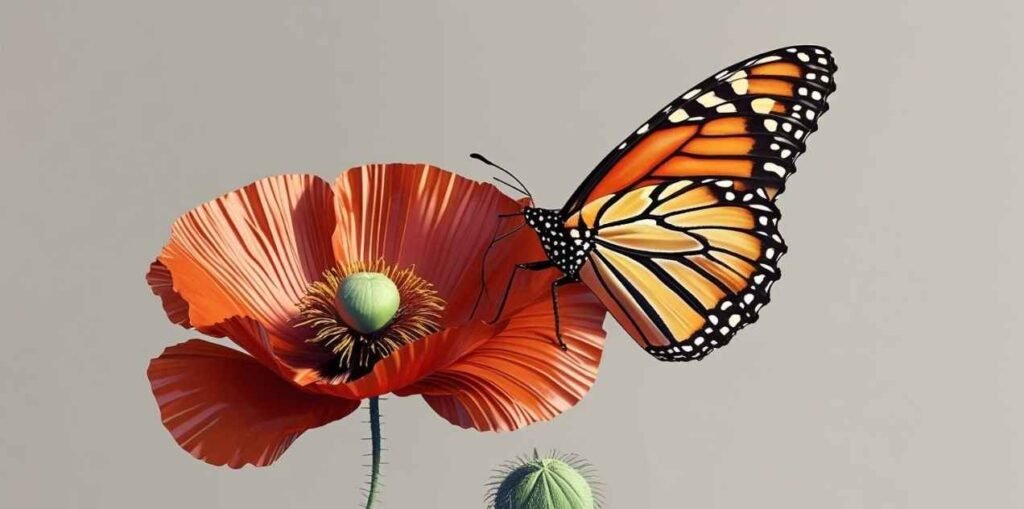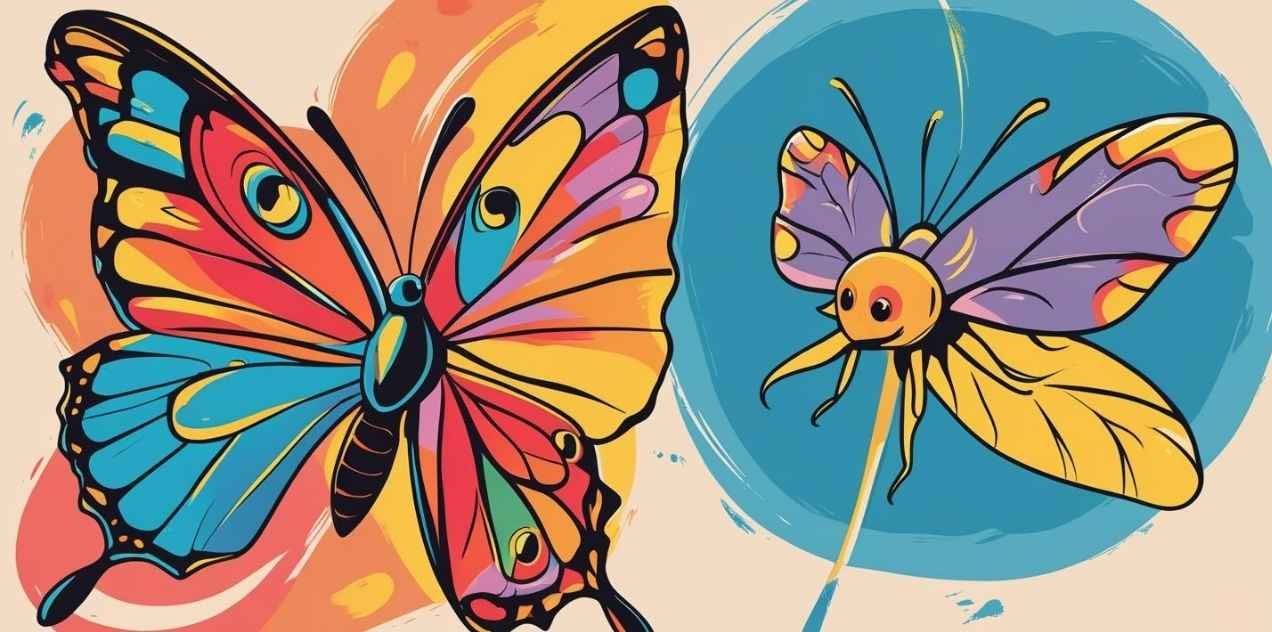Introduction – A Curiosity in the Garden of Nature
PussMoth.com is where beauty, mystery, and nature’s hidden wonders come together. Among the countless creatures that flutter through our gardens and forests, the puss moth stands out.
With its soft, furry body and delicate wing patterns, it looks like something painted in a fantasy storybook. Yet beyond its elegance lies a deeper tale—a story of survival, transformation, and quiet resilience. Much like a rare piece of art, the puss moth invites us to pause, notice, and appreciate the small miracles happening all around us. In a world that moves fast, these moments of connection are priceless.
Nature lovers often find themselves pausing to admire a fluttering wing in the park or a resting moth on a window. This simple act connects us to something bigger—a quiet reminder of life’s fragile yet resilient design.
What is the Puss Moth?
The puss moth (Cerura vinula) is a striking member of the moth family, known for its silky appearance and curious caterpillar stage. Its name comes from its soft, cat-like fur, giving it a charming yet unusual look.
While many moths blend into their surroundings, the puss moth proudly shows off its pale wings and black markings. Its caterpillar, however, is the real showstopper—green, alien-like, and armed with a surprising defense mechanism.
It is part of a long evolutionary chain, reminding us that even delicate creatures can carry powerful adaptations. Some people even wonder about the ancient origins of moths, leading to questions like those explored here:
https://pussmoth.com/es-mito-o-realidad-que-mariposas-vienen-dinosarios
Origins and History
Moths have been on Earth for millions of years, evolving alongside flowers, trees, and the changing climate. The puss moth, native to Europe and parts of Asia, has adapted to live in forests, gardens, and even urban areas where willow and poplar trees grow.
In history and folklore, moths were often linked to mystery, change, and even the human soul. The puss moth’s fluffy, almost playful appearance contrasts with the intense transformation it undergoes during its life cycle—an idea also beautifully seen in other species like the Gulf fritillary:
https://pussmoth.com/ciclo-de-vida-de-la-mariposa-speyeria-del-golfo
Real-World Roles & Applications
1. Nature & Ecology
In the food chain, puss moths are essential. Their caterpillars provide food for birds, while adults help in pollination. They are living indicators of environmental health—when moth populations drop, it often signals ecosystem trouble.
The symbolism of butterflies and moths has even found its way into gifts, like the thoughtful beauty behind a crystal butterfly:
https://pussmoth.com/el-simbolismo-de-un-regalo-de-mariposa-de-cristal
2. Education & Science
From classrooms to research labs, the puss moth is used to teach about metamorphosis, defense mechanisms, and environmental adaptation. Learning about its life cycle often inspires curiosity in young minds—similar to the educational journey seen in other butterfly life cycles:
https://pussmoth.com/ciclo-de-vida-de-la-mariposa-la-oruga
3. Art, Design & Inspiration
Artists draw inspiration from the puss moth’s soft tones and unique caterpillar shape. Designers often use its patterns in textiles, tattoos, and even interior décor. A similar creative expression can be seen in symbolic tattoo designs:
https://pussmoth.com/tatuajes-de-mariposas-la-lucha-por-el-logro
4. Business Branding & Symbolism
In branding, moths and butterflies are symbols of transformation and beauty—powerful messages for companies that want to show growth, change, and elegance.
How It Compares to Other Moths and Models
While the puss moth stands out for its furry elegance, other moths have evolved for camouflage or speed. Some, like monarch butterflies, are famous for their long migrations:
https://pussmoth.com/la-migracion-de-las-mariposas-hacia-florida
Others are known for their resilience and population recovery, as seen here:
https://pussmoth.com/las-mariposas-monarca-regresan-a-lo-grande
https://pussmoth.com/las-mariposas-monarca-se-recuperan
Compared to traditional models of studying insects, the puss moth offers a perfect blend of visual charm and scientific intrigue.
FOR MORE BLOG PLS VISIT : DAILY LIFE WAYS

Future Implications – Conservation, Ethics & Opportunities
Climate change, habitat loss, and pesticides threaten moth populations worldwide. Protecting creatures like the puss moth is not just about saving a species—it’s about preserving an essential thread in nature’s web.
Just as monarch butterfly conservation has global attention:
https://pussmoth.com/mariposas-monarca-esto-es-lo-que-puedes-hacer/
We can adopt similar practices for moths: planting native flowers, reducing light pollution, and supporting green spaces.
Even behavioral studies, like exploring the “mentality” of a butterfly for a successful life, give insight into resilience:
https://pussmoth.com/la-mentalidad-de-la-mariposa-una-vida-exitosa
Best Practices – Observing & Supporting Moths
- Plant Moth-Friendly Gardens – Grow willow, poplar, and other plants they love. (See more plant suggestions here:
https://pussmoth.com/cinco-plantas-que-atraen-mariposas-para-su-jardin) - Avoid Harmful Chemicals – Pesticides can kill moth larvae and disrupt their life cycles.
- Reduce Light Pollution – Bright lights at night disorient moths, reducing their survival chances.
- Support Local Conservation Efforts – Many organizations monitor moth populations and need public help.
- Observe Respectfully – Like in the peaceful scene of a flower and a butterfly:
https://pussmoth.com/una-flor-y-una-mariposa
Conclusion – The Human Connection to Moths
The puss moth is more than just an insect—it’s a storyteller. It talks about change, resiliency, and the understated beauty that is sometimes missed in our hectic world.
From the resurrection symbolism of butterflies:
https://pussmoth.com/la-mariposa-simbolo-de-resurreccion
To the everyday wonder of their short yet meaningful lives:
https://pussmoth.com/vida-util-de-una-mariposa
These creatures remind us that beauty and strength can be found in the smallest corners of nature.
FAQs
1. What does a puss moth look like?
It has pale grey-white wings with black markings and a furry body, making it look soft and cat-like.
2. Where do puss moths live?
They can be found throughout Europe and certain parts of Asia, particularly in areas with poplar and willow trees.
3. Are puss moths dangerous?
No. They are harmless to humans, though their caterpillars can release formic acid as a defence against predators.
4. Why are moths important?
They help pollinate plants, feed other animals, and indicate the health of the environment.
5. How can I attract moths to my garden?
Plant native flowers, avoid pesticides, and keep outdoor lights dim at night.











